Abstract
Three reinforcement contingencies were compared with regard to performance differences and cost-effectiveness (i.e., responses per unit reinforcer). Pairs of college students were studied under individual, cooperative, or competitive contingencies using a concurrent setting that included one of these three contingencies as one alternative and a lower paying individual contingency as the other alternative. With the individual and the cooperative contingencies, overall response rates were typically high; under competitive contingencies the overall response rates were substantially lower. Subjects responded at very high rates when competing, but chose not to compete most of the time. Competition and cooperation produced the most cost-effective responding, assessed as the number of responses made per $.01 of reinforcer. High overall rates of competitive responding were obtained when the contests were longer and the lower paying alternative contingency was not available.
Keywords: interpersonal relations, reinforcement contingencies, competition, cooperation, individual contingency, cost-effectiveness, variable-interval schedule, concurrent schedule, college students
Full text
PDF
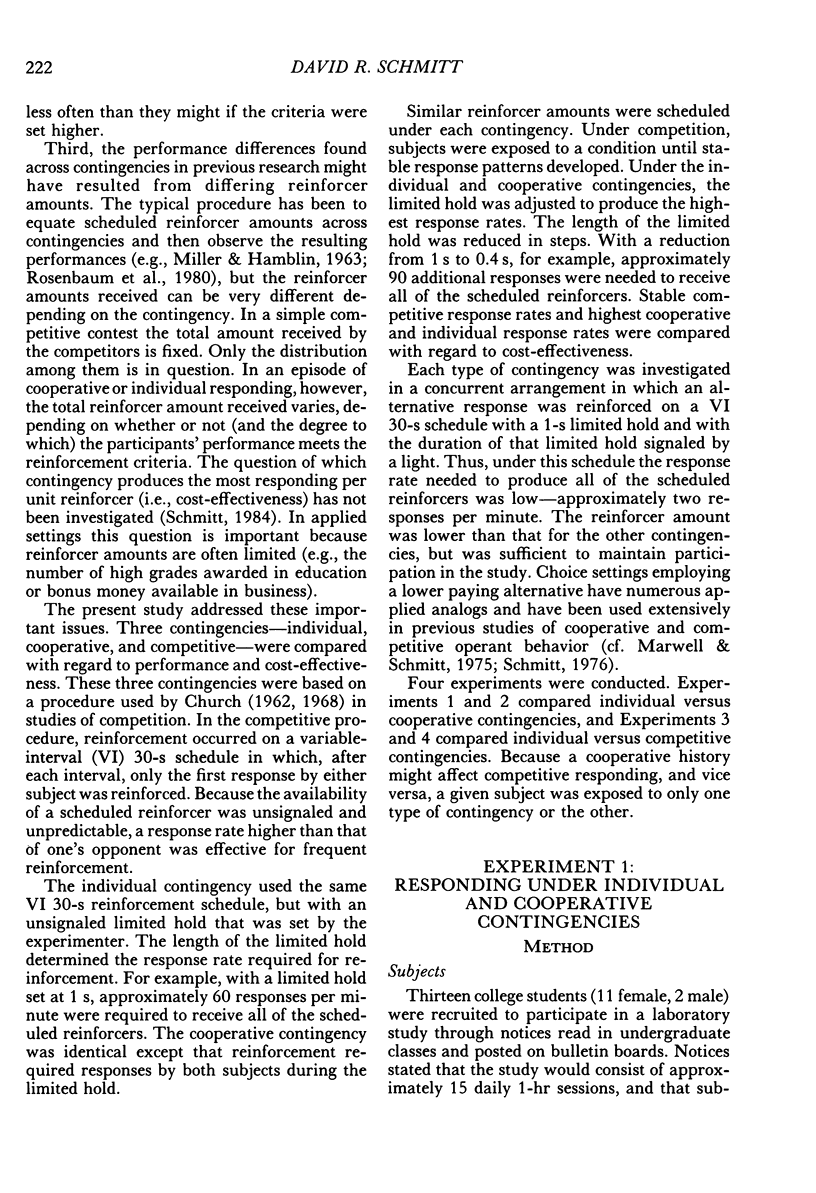
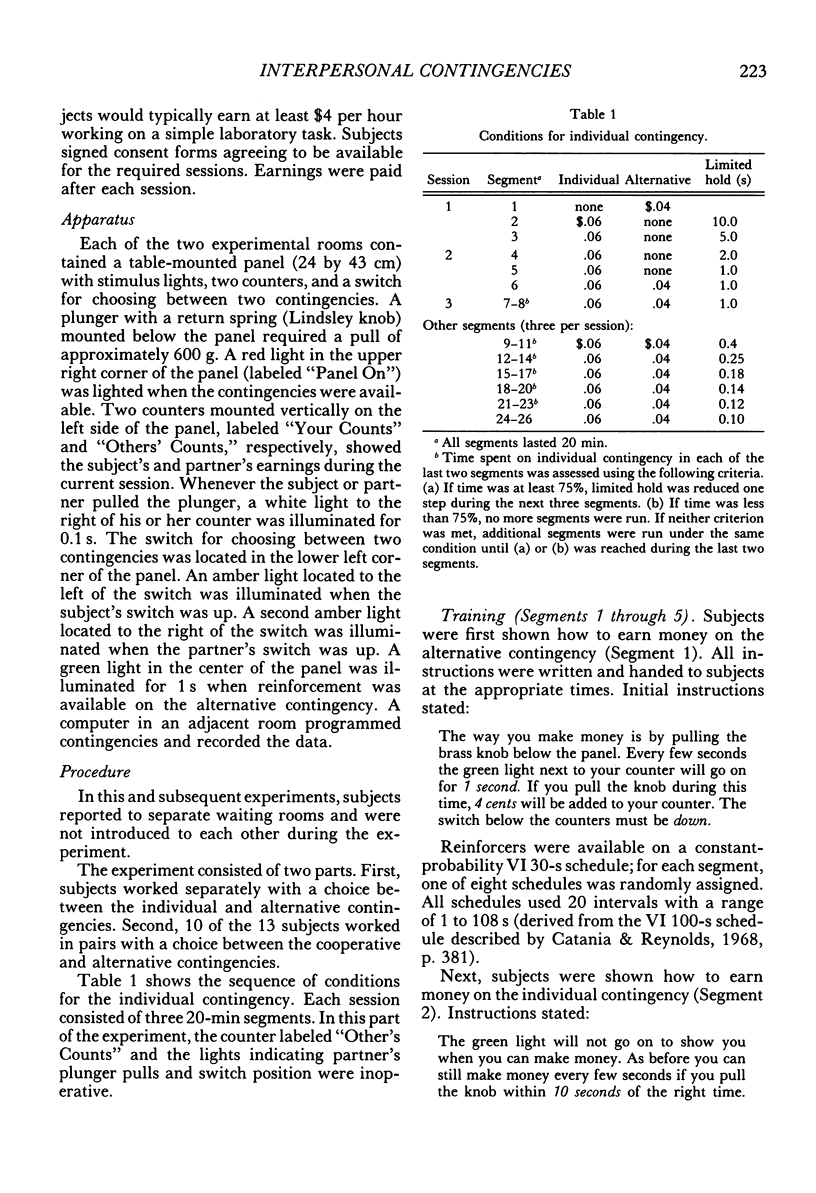
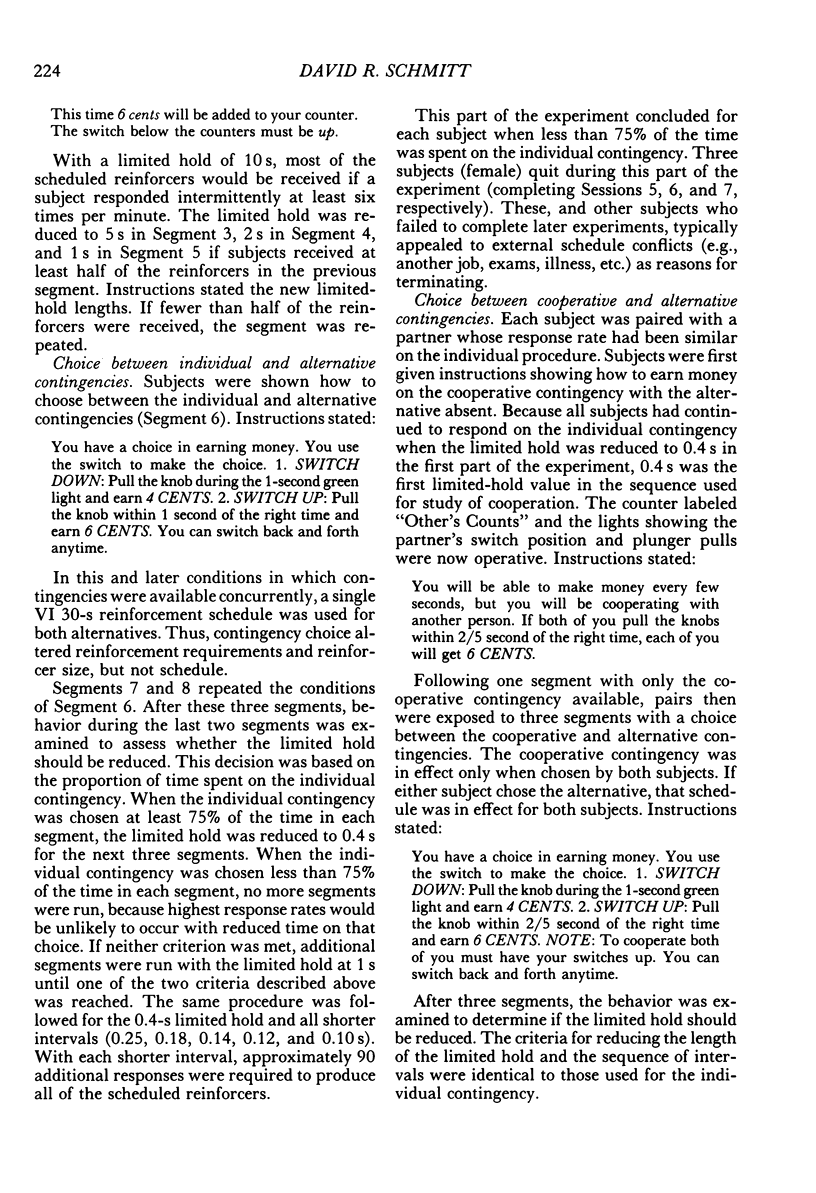
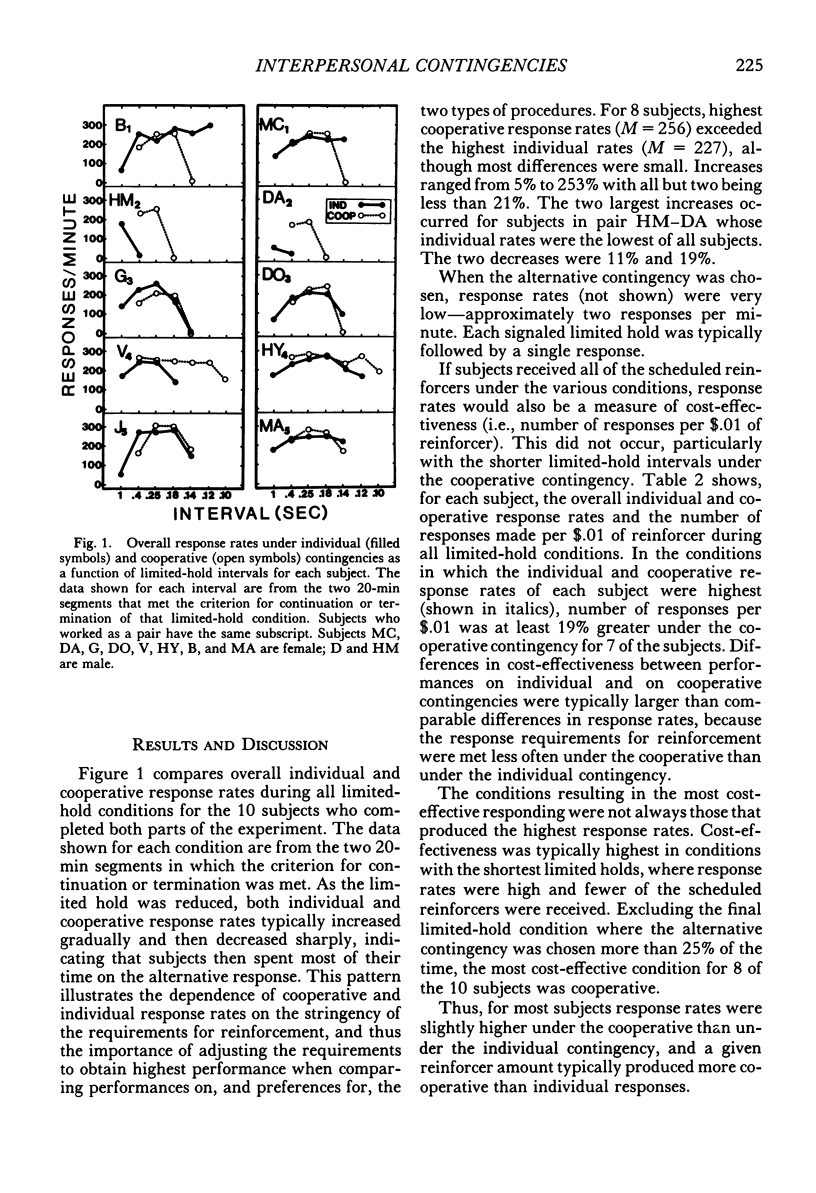
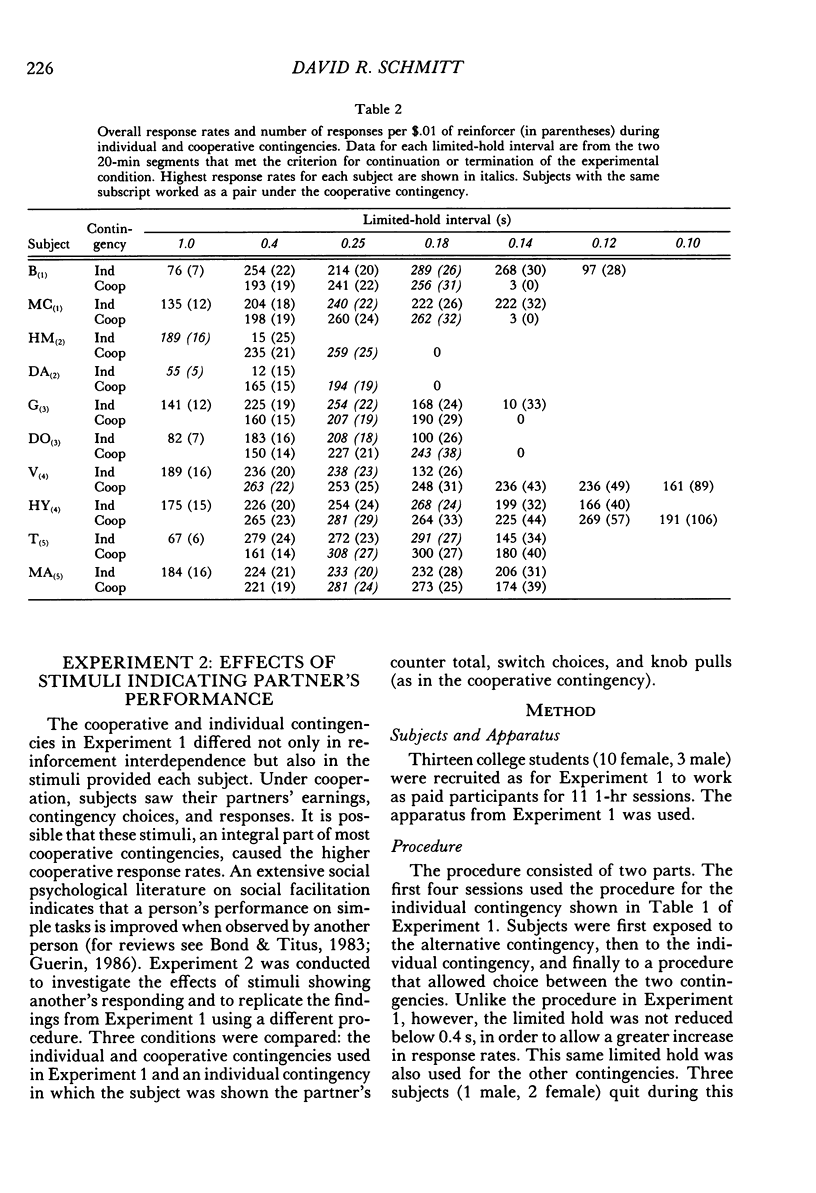

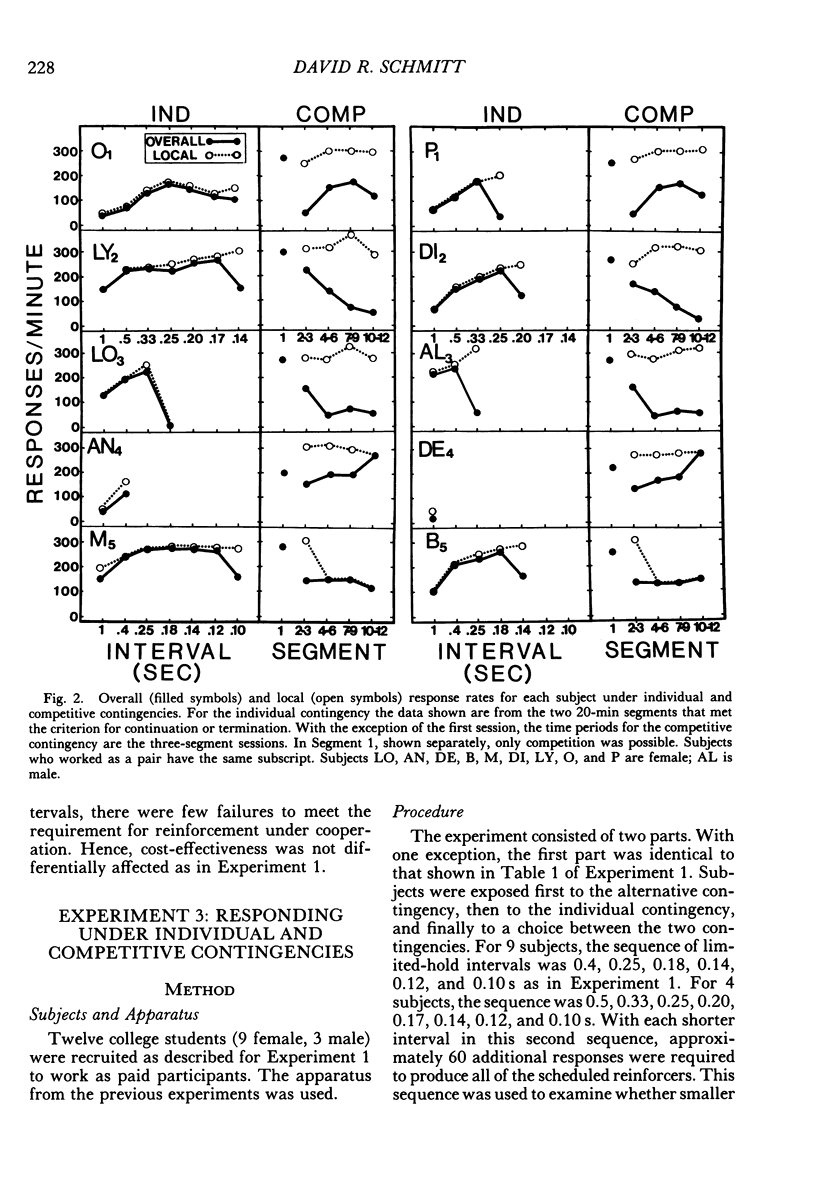
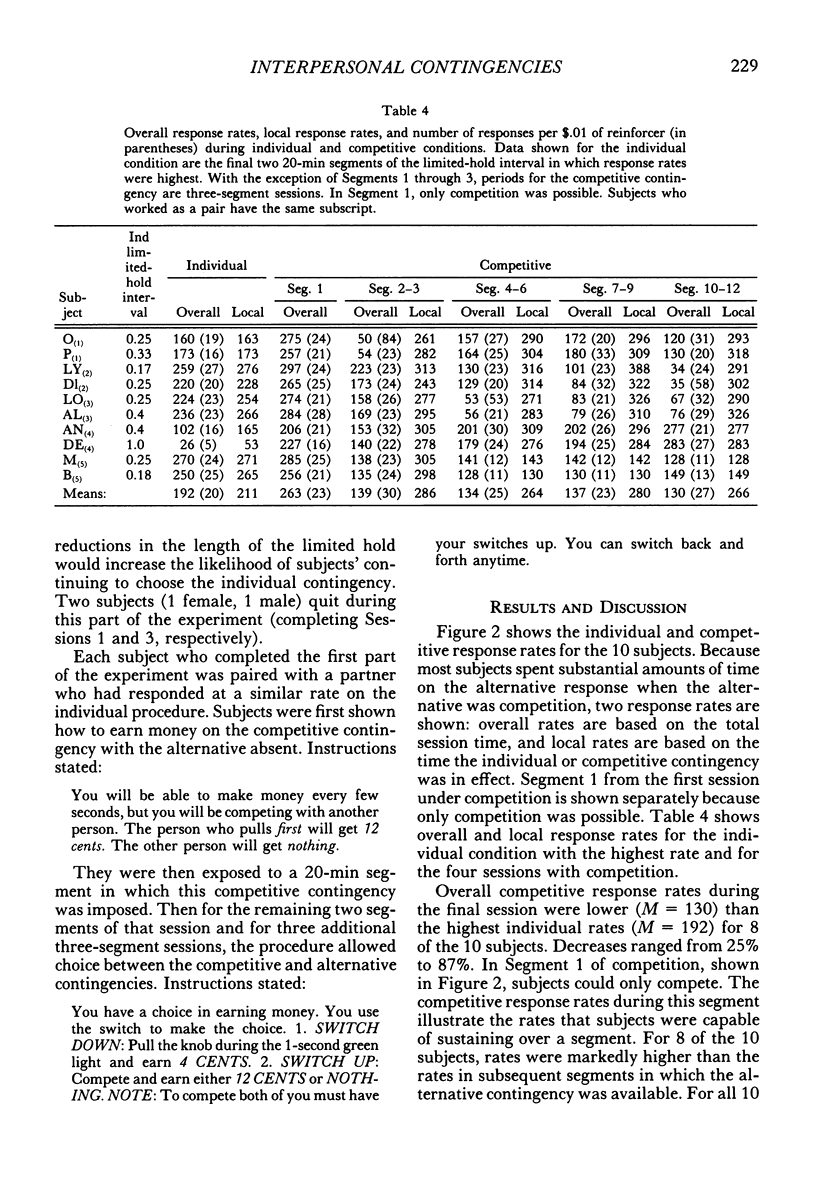
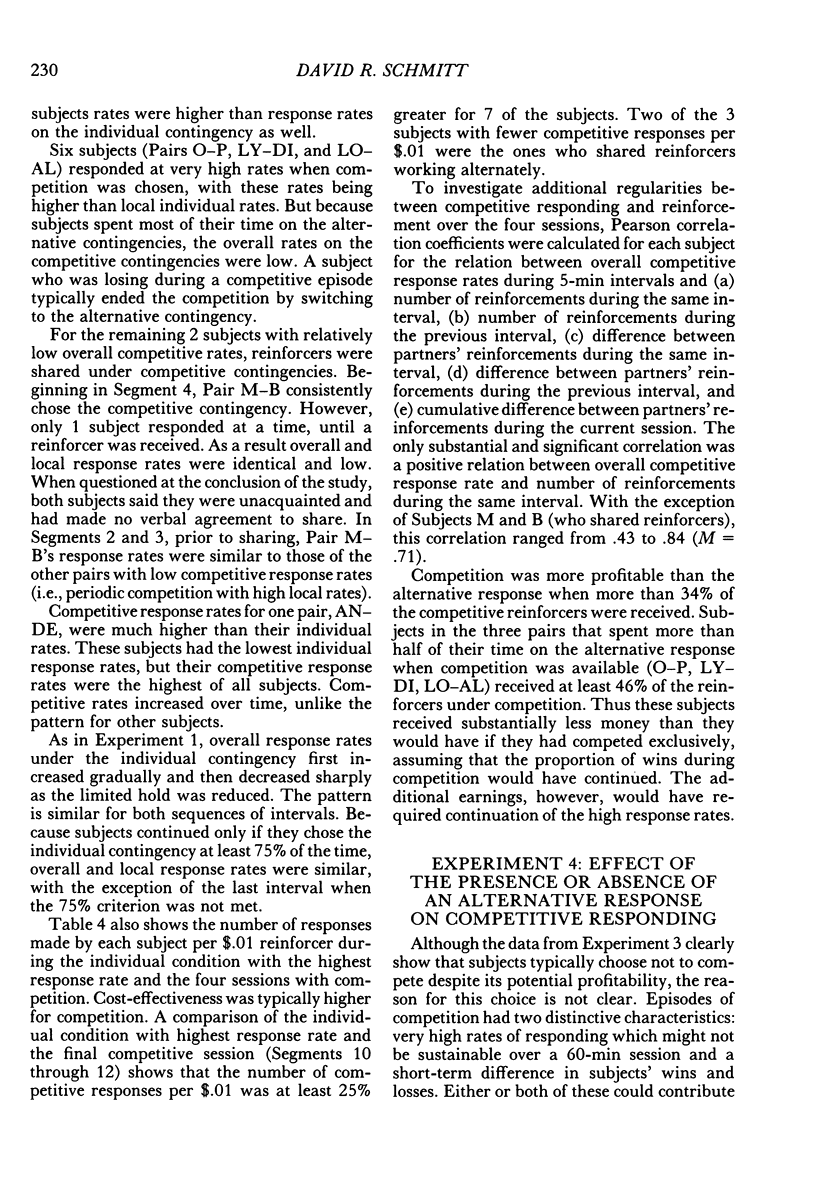
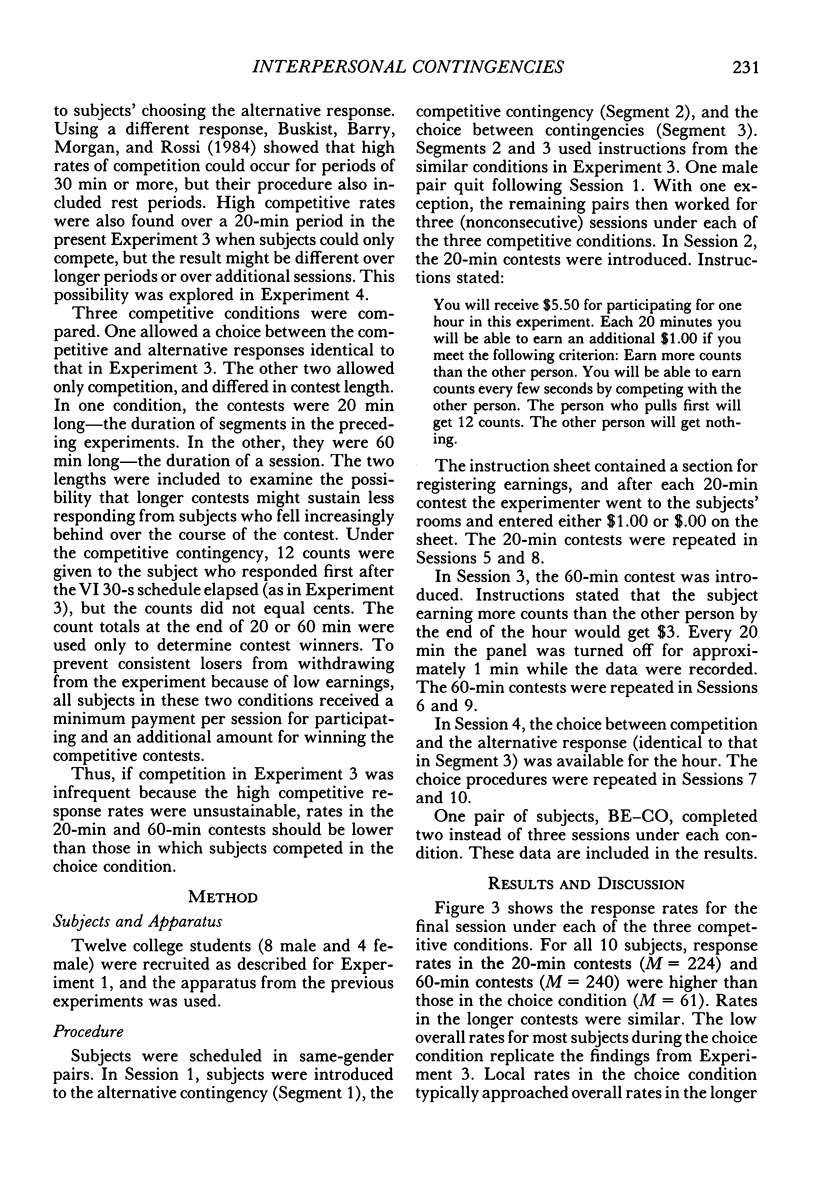
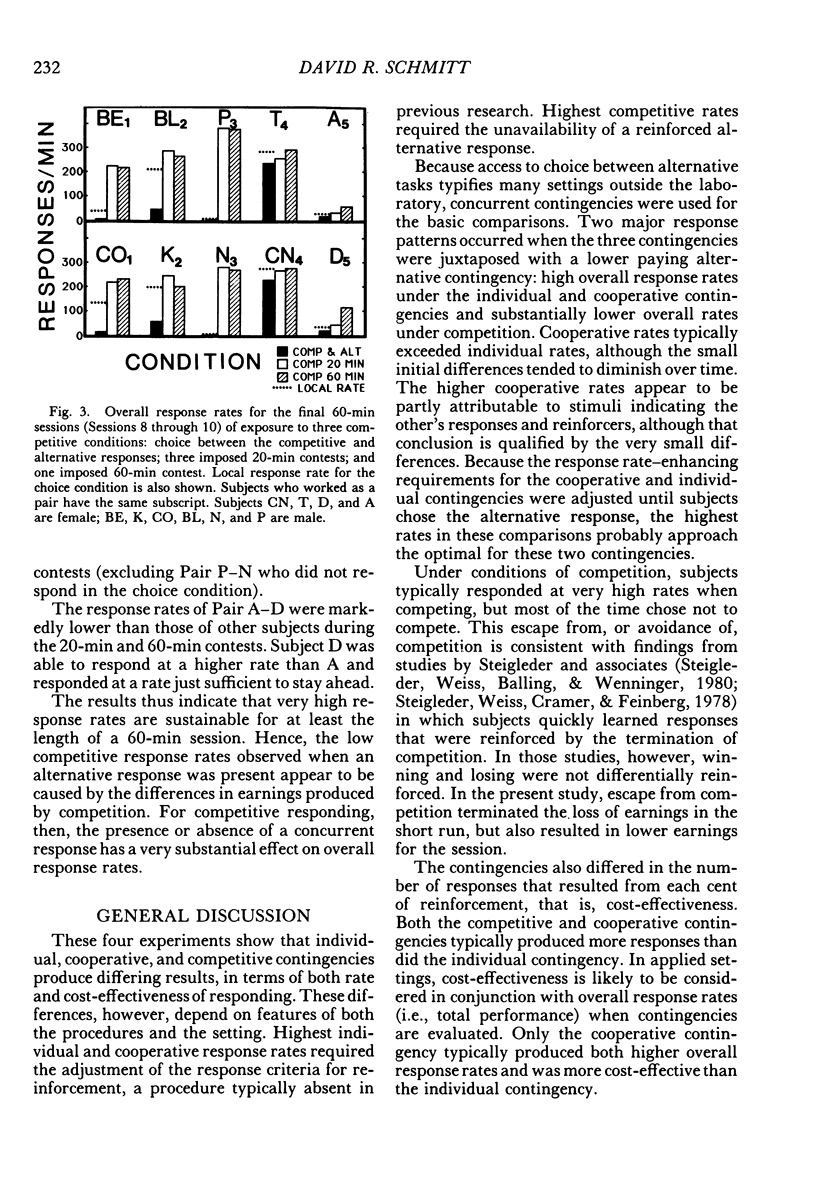
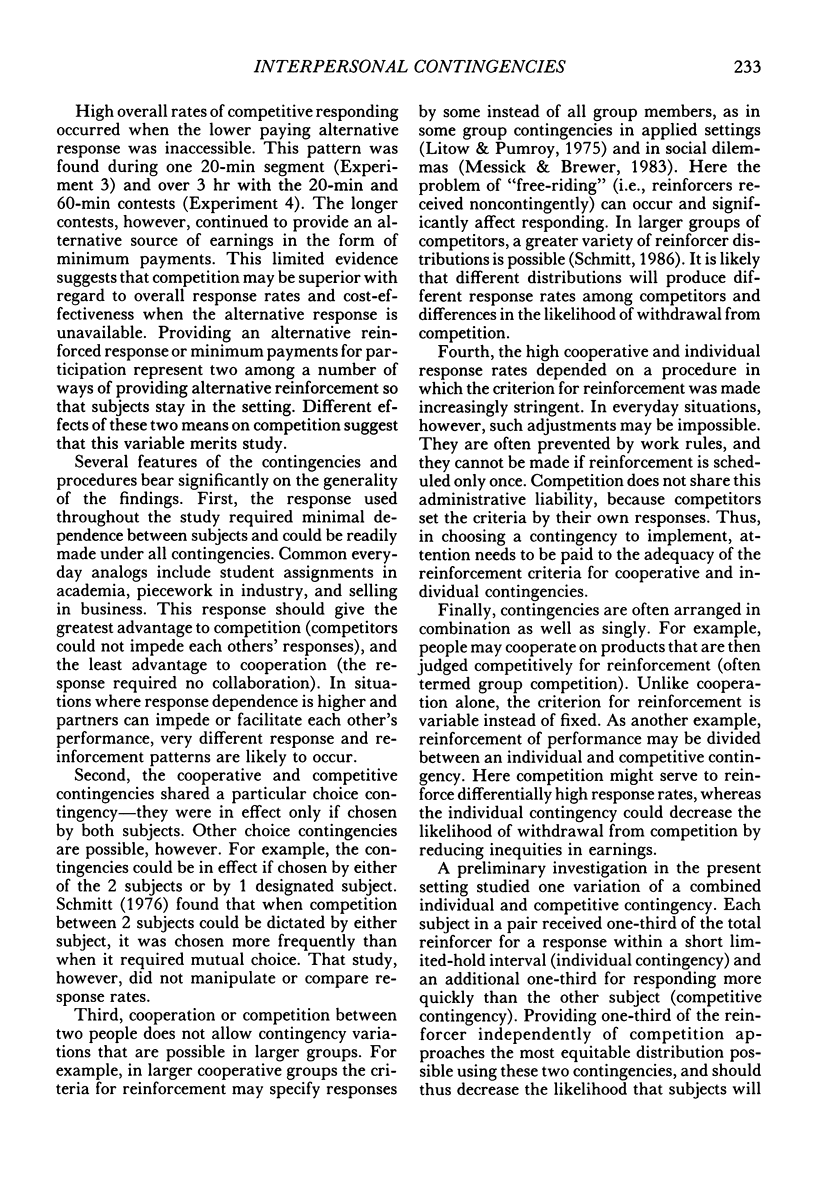
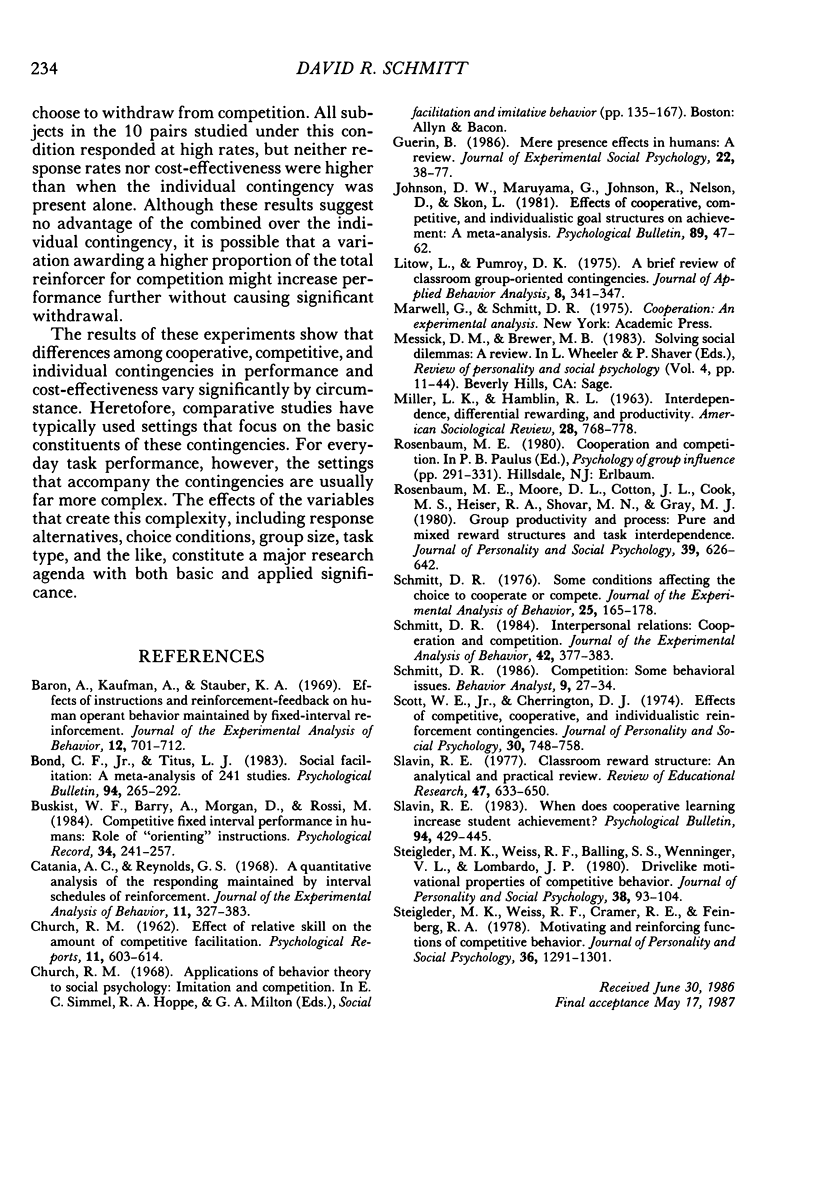
Selected References
These references are in PubMed. This may not be the complete list of references from this article.
- Baron A., Kaufman A., Stauber K. A. Effects of instructions and reinforcement-feedback on human operant behavior maintained by fixed-interval reinforcement. J Exp Anal Behav. 1969 Sep;12(5):701–712. doi: 10.1901/jeab.1969.12-701. [DOI] [PMC free article] [PubMed] [Google Scholar]
- Bond C. F., Jr, Titus L. J. Social facilitation: a meta-analysis of 241 studies. Psychol Bull. 1983 Sep;94(2):265–292. [PubMed] [Google Scholar]
- Catania A. C., Reynolds G. S. A quantitative analysis of the responding maintained by interval schedules of reinforcement. J Exp Anal Behav. 1968 May;11(3 Suppl):327–383. doi: 10.1901/jeab.1968.11-s327. [DOI] [PMC free article] [PubMed] [Google Scholar]
- Litoe L., Pumroy D. K. A brief review of classroom group-oriented contingencies. J Appl Behav Anal. 1975 Fall;8(3):341–347. doi: 10.1901/jaba.1975.8-341. [DOI] [PMC free article] [PubMed] [Google Scholar]
- Schmitt D. R. Interpersonal relations: Cooperation and competition. J Exp Anal Behav. 1984 Nov;42(3):377–383. doi: 10.1901/jeab.1984.42-377. [DOI] [PMC free article] [PubMed] [Google Scholar]
- Schmitt D. R. Some conditions affecting the choice to cooperate or compete. J Exp Anal Behav. 1976 Mar;25(2):165–178. doi: 10.1901/jeab.1976.25-165. [DOI] [PMC free article] [PubMed] [Google Scholar]


